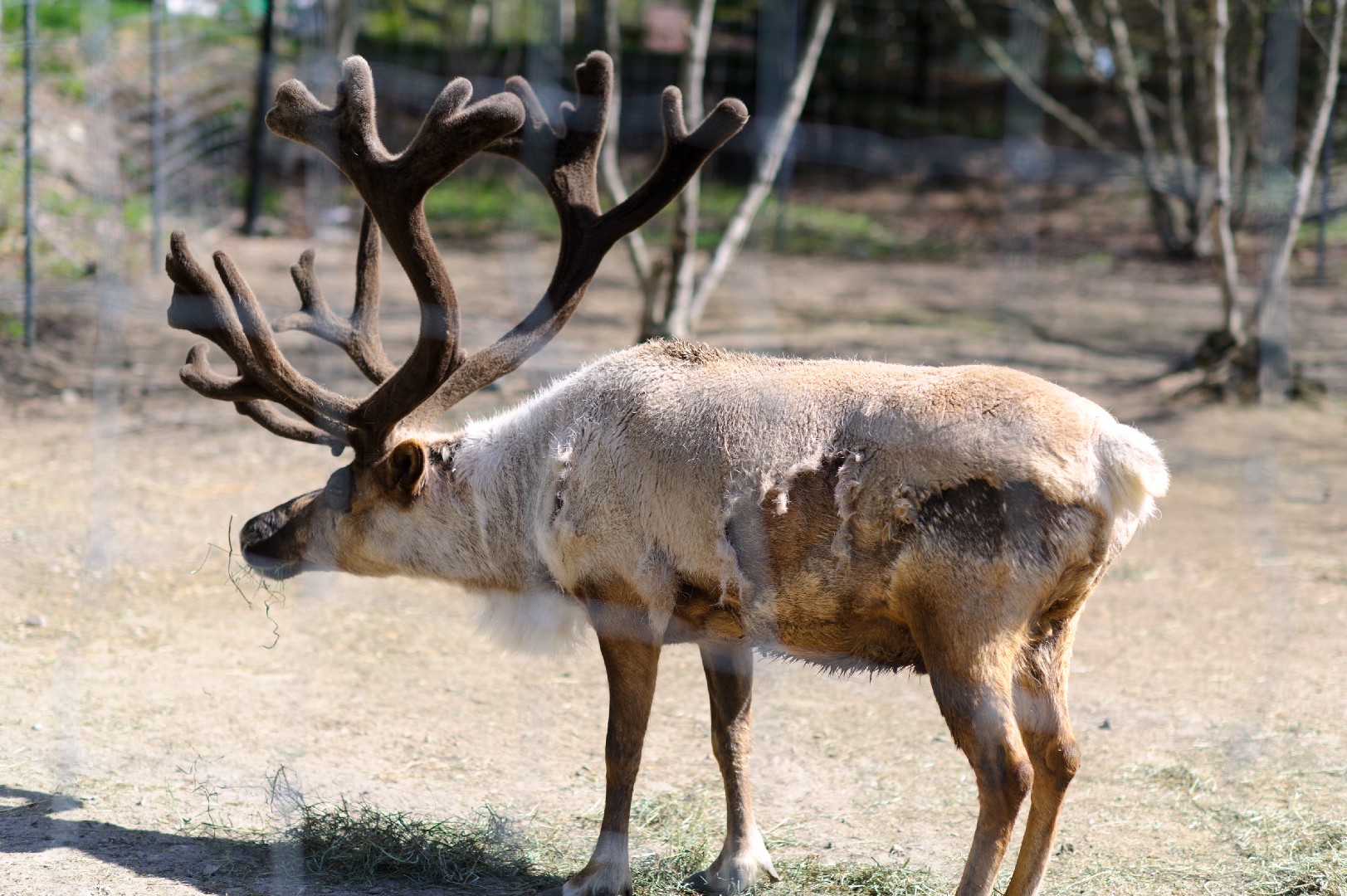Reindeer
A species of Rangifer, Also known as Migratory woodland caribou, Svalbard reindeer, Semi-domestic reindeer Scientific name : Rangifer tarandus Genus : Rangifer
Reindeer, A species of Rangifer
Also known as:
Migratory woodland caribou, Svalbard reindeer, Semi-domestic reindeer
Scientific name: Rangifer tarandus
Genus: Rangifer
Content
Description People often ask General Info
 Photo By Eric Kilby , used under CC-BY-SA-2.0 /Cropped and compressed from original
Photo By Eric Kilby , used under CC-BY-SA-2.0 /Cropped and compressed from original Description
Some scientists suspect that it immigrated from Eurasia a long time ago. Others think it is a very close relative of the extinct East Greenland reindeer, and it might have come from Greenland.
People often ask
General Info
Lifespan
10-20 years
Diet
Reindeer predominantly feeds on lichens during harsh winter months, supplementing its diet with the ample vegetation available during the summer, such as leaves, shoots, and grasses. Their advanced digestive system allows them to extract nutrients efficiently from these foods.
AdultSize
162–214 cm (64–84 in)
Appearance
There is considerable variation between subspecies in the size of the antlers (e.g. they are rather small and spindly in the northernmost subspecies), but on average the bull reindeer's antlers are the second largest of any extant deer, after the moose. In the largest subspecies, the antlers of large males can range up to 100 cm (39 in) in width and 135 cm (53 in) in beam length. They have the largest antlers relative to body size among living deer species. Antler size measured in number of points reflects the nutritional status of the reindeer and climate variation of its environment.
The colour of the fur varies considerably, both between individuals and depending on season and subspecies. Northern populations, which usually are relatively small, are whiter, while southern populations, which typically are relatively large, are darker.
The females usually measure 162–205 cm (64–81 in) in length and weigh 80–120 kg (180–260 lb). The males (or "bulls" as they are often called) are typically larger (to an extent which varies between the different subspecies), measuring 180–214 cm (71–84 in) in length and usually weighing 159–182 kg (351–401 lb). Exceptionally large males have weighed as much as 318 kg (701 lb). Weight varies drastically between seasons, with males losing as much as 40% of their pre-rut weight.
Behavior
Reindeer mate in late September to early November and the gestation period is about 228–234 days. During the mating season, males battle for access to females. Two males will lock each other's antlers together and try to push each other away. The most dominant males can collect as many as 15–20 females to mate with. A male will stop eating during this time and lose much of his body reserves.
Population
Decreasing